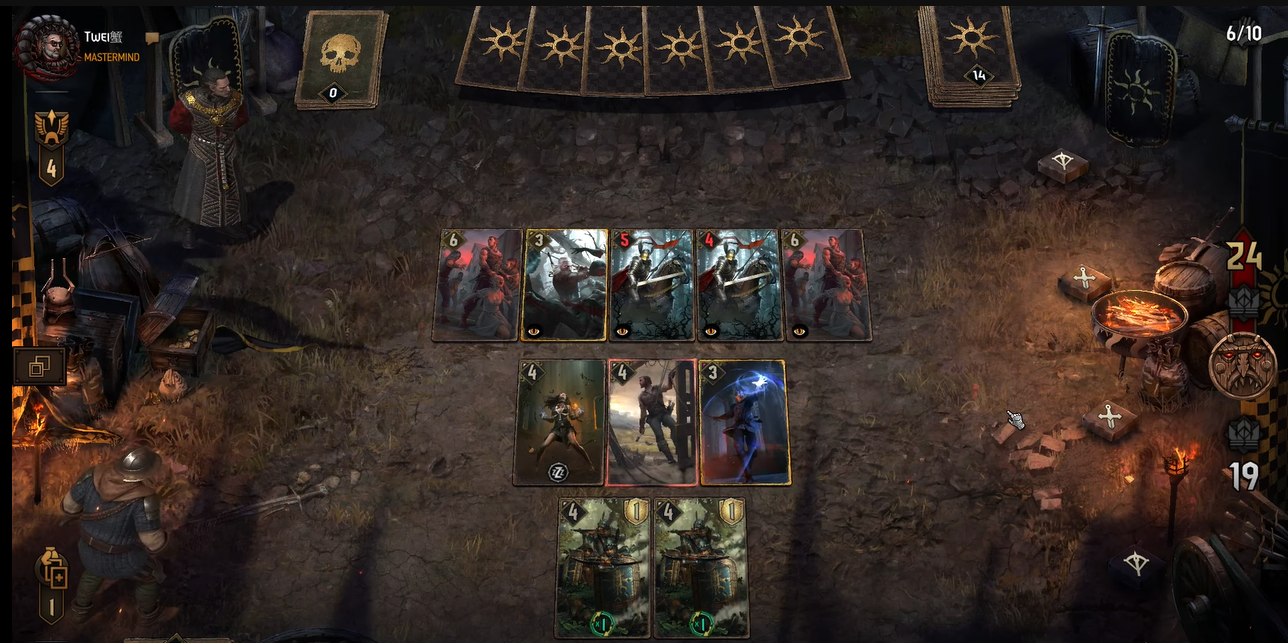
Dominating the Battlefield: A Deep Dive into the Nilfgaardian Deck in Gwent
- by Edwin K Brown
- Posted on 2023-07-17
Venturing into the world of Gwent: The Witcher Card Game, players encounter a variety of faction decks, each with its unique playstyle. Among these, the Nilfgaardian deck stands out as a powerful choice, focused on controlling the game through manipulation and deception. Known for its tactical spy cards, disloyal units, and reveal mechanics, the Nilfgaardian deck has always been a formidable contender.
Key Traits of a Nilfgaardian Deck:
- Control: The Nilfgaardian deck excels at disrupting the enemy’s plans by locking and seizing enemy units, revealing cards, and directly manipulating the battlefield;
- Information Advantage: Reveal mechanics allow Nilfgaardian players to see enemy cards, giving them a strategic upper hand;
- Spy Mechanics: This faction is renowned for its use of disloyal units, which can provide considerable advantage and flexible strategies.
Essential Cards for Your Nilfgaardian Deck
Building a strong Nilfgaardian deck requires understanding the function and synergy of certain cards. Here’s a list of some quintessential cards:
- Impera Brigade: This bronze card grows stronger for each spying enemy. With your deck’s ability to play numerous spying units, this card can become a powerhouse;
- Mangonel: As a card that damages enemies when you reveal cards, Mangonel is a great asset in a reveal-centric deck;
- Vilgefortz: As a legendary gold card, Vilgefortz allows you to destroy an ally, then draw and play a card, offering a unique way to cycle through your deck and utilize lower power cards;
- Letho of Gulet: Letho, a gold card, can banish units on a row, and if it’s the enemy’s, he boosts himself by their power. He can be a game-changer if used tactically;
- Rainfarn of Attre: He can summon a spying unit from your deck, boosting deck consistency and granting a powerful tempo swing;
- Menno Coehoorn: This card can destroy an enemy spying unit. With Rainfarn and numerous other ways to create spies, Menno Coehoorn provides a quick way to remove heavy hitters from the game.
Building a Winning Strategy
Your strategy with a Nilfgaardian deck will largely depend on the specific cards you have chosen. Here are some strategic points to consider:
- Control the Board: The primary goal of a Nilfgaardian deck is to control the board. Utilize your lock cards, seize abilities, and disloyal units to disrupt your opponent’s strategies and dictate the flow of the match;
- Optimize Information Advantage: Use your reveal mechanics to peak at your opponent’s hand, allowing you to anticipate their moves and adjust your strategy accordingly;
- Leverage Spies: With your spying units, draw out the game and disrupt your opponent. Ensure to have cards like Impera Brigade, Menno Coehoorn, and Rainfarn of Attre to take full advantage of your spies;
- Manage Your Resources: Nilfgaardian can be a high-risk, high-reward faction. Cards like Vilgefortz and Letho of Gulet may require sacrificing your own units, so plan carefully and make sure every move counts.
Mastering The Leader Abilities
Leader abilities provide additional options during gameplay and can significantly enhance your strategy. Some popular choices for Nilfgaard include:
- Emhyr var Emreis: Emhyr’s ability to return an ally to your hand can provide immense value if combined with powerful deploy effects;
- Morvran Voorhis: As a leader focused on the reveal mechanic, Morvran synergizes well with Mangonel and other reveal-oriented cards;
- Usurper: His ability to copy an enemy’s leader ability provides versatility and unpredictability, allowing for interesting strategic developments.
Conclusion
Playing with a Nilfgaardian deck in Gwent: The Witcher Card Game is an exercise in strategic cunning, offering rewarding gameplay for those willing to master its intricacies. With its potent mix of control, information advantage, and spy mechanics, Nilfgaard stands as a faction capable of conquering any opponent. Stepping into the boots of a Nilfgaardian general, players must navigate the battlefield with both power and intellect, controlling the game to ensure the sun always rises on the empire.
FAQ
Balancing disloyal units requires a thorough understanding of your deck and the metagame. You don’t want too many spies, as you can end up aiding your opponent. Stick to essential spies and those which synergize well with other cards in your deck.
The Nilfgaardian deck relies heavily on strategy and foresight. Its unique playstyle requires careful planning and management of resources. You’ll need to know your deck thoroughly and be able to predict and counter your opponent’s moves.
Leader abilities should ideally complement your deck’s strengths. For example, Morvran Voorhis is a great choice if your deck leans towards reveal mechanics. The key is to match your leader to your deck style for maximum synergy.
Nilfgaard has access to a decent amount of deck manipulation and draw mechanics. Cards like Joachim de Wett, Vilgefortz, and the leader ability of Emhyr var Emreis can help navigate bad draws. Additionally, thinning your deck with the use of emissaries or golems can help you draw into your key cards more consistently.
Venturing into the world of Gwent: The Witcher Card Game, players encounter a variety of faction decks, each with its unique playstyle. Among these, the Nilfgaardian deck stands out as a powerful choice, focused on controlling the game through manipulation and deception. Known for its tactical spy cards, disloyal units, and reveal mechanics, the Nilfgaardian…